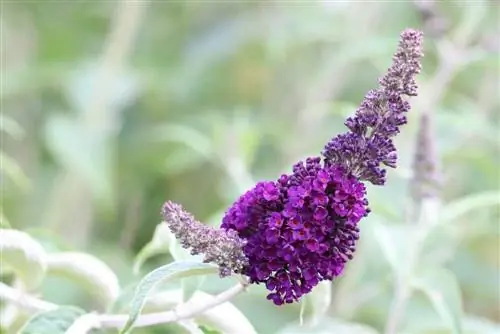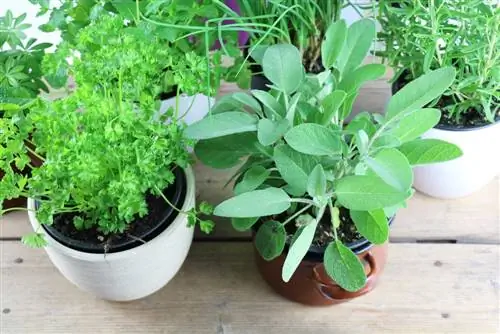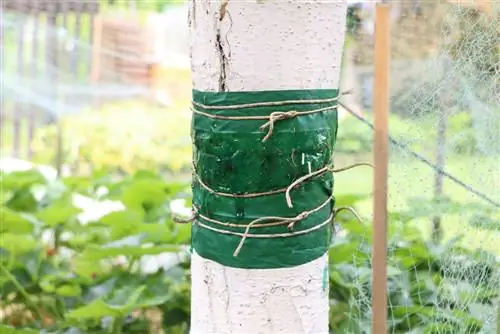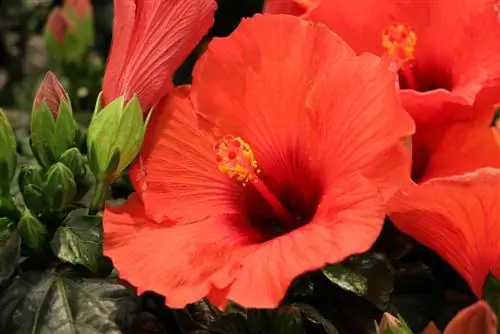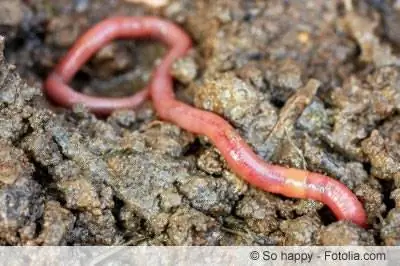- Author admin [email protected].
- Public 2023-12-17 03:39.
- Last modified 2025-01-24 12:45.
Propagate shrubs from your own garden is not as difficult as it might sound at first. The various tips for this have been put together in the following article to ensure that propagation is successful.
Propagate bushes
Anyone who has a decorative shrub in their own garden or admires a particularly beautiful one in their neighbor's garden wonders whether it can also be propagated. There are various plants that can be propagated very easily, but others require a little sensitivity and patience. However, it is always worth a try and there are 2 different methods:
Propagation via seeds
- Collecting and sowing seeds
- However, propagation is not varietal
- takes a very long time
Propagation via cuttings
- Cuttings
- Lowers
- bring identical specimens of the mother plant
Note:
It is easier to grow a shrub from cuttings or suckers than from seeds. Firstly, you need a lot more patience when sowing and the new bush will only be as large as desired a few years later. Secondly, it is always possible that the shrub that you already have in the garden will not grow from the seeds. This has to do with pollination.
Appropriate timing
So that the new shrub grows quickly from a cutting, the right time for cutting is important. However, there are different times for this, depending on the plant and type of shrub:
- May to August suitable months
- Note the maturity level of the shoots
- not too soft
- then tend to rot
- the more woody, the later root formation
- summer green plants also in autumn
- cut without green after leaves fall
- are used as cuttings
Tip:
When is the right time to take cuttings depends on the respective plant and requires a little sensitivity.
Choose a he althy shrub

In order for the selected shrub to propagate successfully, it must be he althy. If the mother plant is weak or sick, propagation through the cuttings obtained will not be successful, as these will then also not be he althy and have no strength for root formation:
- strong growth
- without fungal infestation
- can be promoted through fertilization
- cutting a bare bush
- grow new
- Get cuttings only next year
Cracklings suitable
Not all shrubs can be treated equally to obtain cuttings. Because there are definitely plants from which the cuttings should not be cut for better rooting. Here they are torn off the bush, even if it sounds strange:
- also called basal cuttings
- suitable for coniferous trees
- Boxwood or yew
- are obtained directly from the first shoot section
- tear off directly at the junction
- Cut off any excess bark strips
- especially a lot of division fabric
- forms new roots so quickly
Reduce evaporation area
If it is cuttings from large-leaved plants, then they should not have too much evaporation surface. These include, for example, hydrangeas. This is due to the following reasons:
- more water evaporates than can be absorbed
- whenever no roots have formed yet
- clean and sharp knife or scissors
- remove half leaf areas
- remaining half is enough for photosynthesis
- less space is required in the propagation box
- Leaves must not touch each other
- promotes fungal diseases
Ideal growing climate
In order for cuttings with light, thin leaves to form roots quickly, they need a special growing climate so that it happens faster:
- so-called tense air
- to form roots
- ideally use seed trays or containers with a hood
- alternatively put a transparent plastic bag over it
- cut PET bottle also suitable
- also make sure there is enough heat
- Growing tray with bottom heating
- alternatively place on a warm windowsill
- Lift and ventilate the lid often
- The location should also be bright without direct sun
Note:
Gardeners call particularly high humidity in the growing pot tense air. This means that the leaves evaporate less moisture and the water can be used for faster rooting.

Use water glass
Many shrub cuttings can also be grown in a glass of water, which can be placed on the bright windowsill:
- Short rooting process
- Darkening the glass from the outside
- wrap in aluminum foil
- alternatively don't use glass, but a porcelain vase
- Add rooting powder for faster root formation
- As soon as the first roots appear, plant
- shorten long roots beforehand
- use sharp and clean scissors
Use the lowering tool
A shrub can easily be propagated using planters without cuttings. The advantage here is that only the mother plant needs to be well looked after and the offshoot grows all by itself:
- choose long, flexible shoot
- lead approximately in the middle to the floor
- digge lightly in soil
- use a tent peg to attach
- alternatively a curved nail
- leave it in the soil until the first roots appear
- then cut off the mother bush
- plant in your own pot or in your chosen location
Note:
It is often recommended to fix the sinker in the ground with a stone. However, you have to be careful not to damage or bruise the delicate shoot. Then the offshoot will not start.

